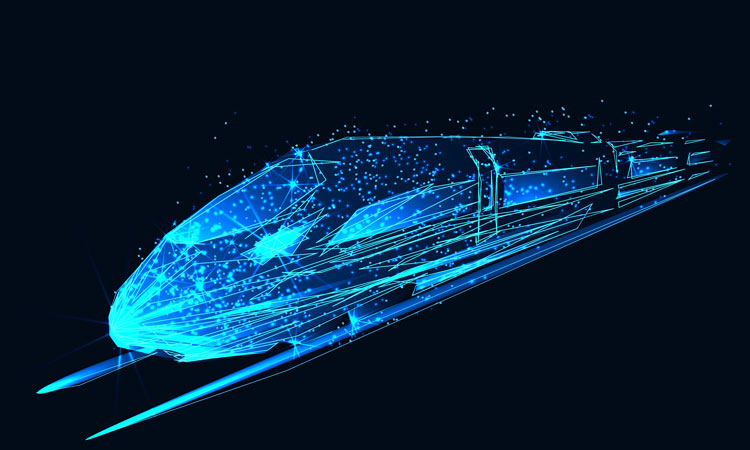The digitalisation of railways drives safer trains
Posted: 12 January 2021 | Huawei | No comments yet
With the expected introduction of 5G on railways, which will inevitably result in the application of more technologically advanced capabilities – such as IoT or AI – Huawei is on hand to support railway operators in improving their digitalisation efforts, enabling advances in safety and security across all aspects of the railway, including construction, operations and maintenance.


Ask a railway operator what the number one reason for the digitalisation of operations is, and the reply will be, ‘to ensure safety’. Digitalisation efforts in the railway sector have been focused on this most crucial aspect, followed closely by efficient management of resources and operations and improving the user experience.
Ask a railway operator what the number one reason for the digitalisation of operations is, and the reply will be, ‘to ensure safety’.
Robust connectivity for uninterrupted services is absolutely essential for the signalling and telecommunication setup, or the ‘heart’ of the railway system. This is what controls the performance of the network, ensuring that there are no intra-train collisions or derailments. It is no secret that digitalisation has improved this space by leaps and bounds today. And, with the expected introduction of 5G in the control command railway system, trains will have access to hi-tech capabilities – such as Internet of Things (IoT) and artificial intelligence (AI) applications – that will be able to transmit more data from trackside to control centres, enabling urban rail to manage critical infrastructure even more efficiently and increase safety for the overall sector.
Connectivity also helps passengers to feel more comfortable and safer on their train journeys. This feeling of safety is more from a psychological perspective of being in control should an emergency arise, knowing that they can get timely information updates, contact family members and so on.
End-to-end smart safety management
Safety and security are central elements for any train operation and are required through all stages, from development and construction to operations and the maintenance of the railway line.
Smart construction
Safety and security start at the initial stage of rail construction itself. AI technology is applied for the identification of risks and improvement of safety standards, real-time monitoring and analysis and to also shorten the response time to any situation. Huawei has already participated in several rail construction sites for better safety management, adherence to safety practices and identification of safety violations, not to mention the quick response to any accidents. Additionally, since AI apps eliminate the need for human intervention, it is a cost-effective means of management.
Smart Operations & Maintenance (O&M)
Smart O&M is on the wish list of many railway operators to predict the health of their assets. IoT and AI apps are particularly useful for predictive maintenance, alerting railway staff of failures before they occur rather than the traditional way of reactive asset management. Huawei’s IoT solution for railways – eLTE-IoT and AR IoT Gateway – connects to different sensors and components along the railway track. Data can be sensed, captured and analysed such that, in the event of any abnormalities, the solution triggers an alarm to the train management system, allowing for preventive maintenance actions to be carried out effectively, with minimal human involvement.
Smart O&M is on the wish list of many railway operators to predict the health of their assets.
Over and above monitoring the train’s movement, the condition of the railway tracks and the train’s wheels, it is as important for railway operators to recognise the risks that could lie within their facilities, such as theft, physical damage and so on.
Real-time remote checking at Ferromex
When Ferromex – a division of Grupo México Transportes – needed real-time checking of its 32 railway yards, the company identified Huawei to design and deploy a comprehensive and robust CCTV solution for yard surveillance, yard management, way surveillance, physical reserve areas and overall safety and security. In the first phase, Huawei deployed 378 cameras, 120 RTN510 microwave radios, six servers, and 38 PowerCube 500 units to supply power to remote sites.
Huawei’s 24/7 monitoring solution…has helped to prevent unauthorised personnel, vandalism, robbery and the sabotage of train compartments at Ferromex’s premises.
The results are already obvious – Huawei’s 24/7 monitoring solution with an analytic ability to create alerts triggered by the unexpected movement of objects, people and vehicles that are detected – has helped to prevent unauthorised personnel, vandalism, robbery and the sabotage of train compartments at Ferromex’s premises.
Luis Avila, Digital Director of Ferromex, commenting on the solution, said: “Ferromex faces situations, such as level crossing accidents on the railway, where, despite indications and alerts, drivers and pedestrians frequently try to beat the surge to the train crossing, causing major accidents and, in many cases, fatal incidents. We decided on Huawei’s technology to mitigate the risks. IP cameras covering the level crossing scenario are provided with HD video and an AI analytics function as part of the platform. The great value of Huawei’s infrastructure is that we have been able to lower the operational risks, reduce or prevent accidents and increase productivity and efficiency.”
What is happening at an industry level?
On an industry level, there is a concerted effort to build a common data model (CDM) for the entire railway sector, including all necessary dimensions, such as construction, asset management, functional aspects, project management and even simulation. Work around the CDM is one of the key focus areas of the International Union of Railways (UIC) and is being achieved in close collaboration with Shift2Rail, the joint undertaking set by the European Commission (EC) to align all research activities in the rail domain. Huawei sees digital modelling as a prerequisite to a coordinated, converged and optimised global digitalisation blueprint of all train elements and has a host of solutions ready to fit into each situation, thereby driving safety and security for the sector as a whole.
For more information, please visit here.








